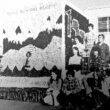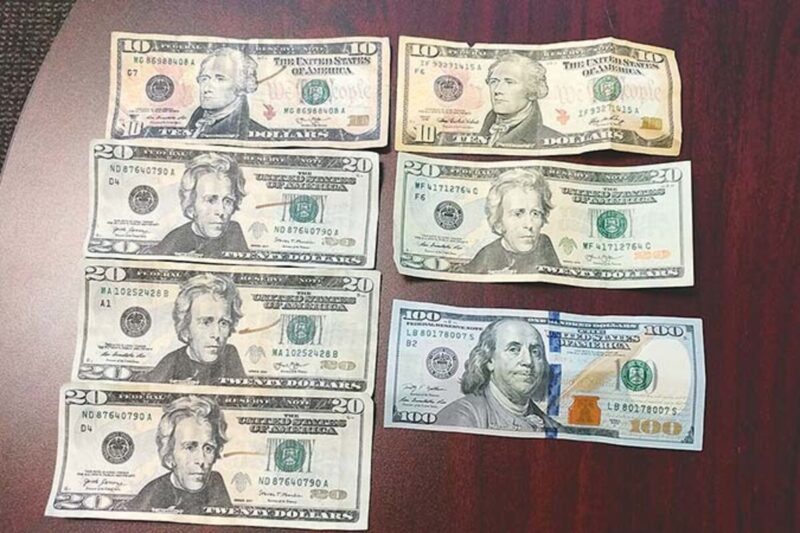Sean C. Morgan
Sweet Home police are warning the public to be careful when receiving $10, $20 and $100 bills.
Police have taken several complaints recently from businesses that have received counterfeit bills.
At the end of September, a customer attempted to pay with a fake $100 bill at All Star Pizza. Police also recently collected a fake $100 at Towne Pump. Last week, Spoleto’s restaurant took in three fake $20 bills and a fake $10 bill.
“They were really obvious,” said Sgt. Jason Van Eck, adding that whoever made them did a poor job of it.
“The ink was smeared,” he said. The bills were poorly cut as well, with uneven edges, and a line used to guide the cutting visible on the edge of a couple of them.
Van Eck said no one knew how the bills ended up in the till at Spoleto’s, although representatives of the store speculated that someone was asking to break them for bills that could be used in video poker machines.
Counterfeit money has appeared sporadically this year, Van Eck said. It hasn’t been as common as in 2017, when people were using toy money marked with red Chinese writing.
The easiest way to protect against counterfeit money is to use a counterfeit detection pen, Van Eck said.
Police Chief Jeff Lynn did an internet search and quickly found a pen for $3.99 online and a pack of five for $7.99.
The pens leave a dark brown color on counterfeit bills while the mark on a legitimate bill is yellow, Van Eck said. The texture of the bill can provide a clue as well, and people should keep an eye out for smeared ink and money that looks like it’s been cut out with scissors.
Bills also show signs they are legitimate when held up to the light, Van Eck said.
Genuine bills have a vertical ribbon in them with text that spells out the bill’s denomination. Bills have watermarks and an additional portrait visible on the right side of the bill. They also have a blue line and tiny yellow numbers across the plain part of the bills.
Security features for each denomination are outlined at http://www.uscurrency.gov/denominations.
“Any business that’s taking cash should be marking them,” Van Eck said. It just takes a second to confirm a bill is real. “At least hold them up to the light and look for the watermarks.”
Clerks also should take extra care when they’re busy, Van Eck said. “I think another thing they do is they wait till it’s busy.”
That can trick an inexperienced cashier, Van Eck said.
Upon receiving counterfeit bills, people should call the police, Van Eck said. Police can follow up with whoever tried to use it and find out where it came from.
Finding a source of counterfeit money “depends on how fast we get notified,” Lynn said.





